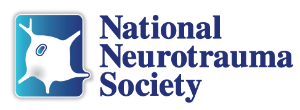Main Menu
Description & Objectives PL03
PL03: ACUTE CELLULAR PATHOPHYSIOLOGY OF
NEUROTRAUMA






Chair: Vance Lemmon, PhD
PL03.01 - Cellular Mechanotransduction and Traumatic Brain Injury
Kevin Kit Parker, PhD - Harvard University
PL03.02 - Axonal Health: Metabolism Takes Center Stage
Jeffrey Milbrandt, MD, PhD - Washington University
PL03.03 - Astroglial Injury Defines a New Panel of Neurotrauma Biomarkers
Session Description
There is little knowledge on the immediate cellular consequences of a traumatic impact. Acute biomechanics include membrane integrity compromise, called mechanoporation. Mechanoporation is defined and recognized in the field. Yet consequences of cellular injury are poorly understood: do membrane-permeable cells endure, do they recover in an altered state or undergo protracted cell death? Is mechanotransduction part of trauma signaling? This session is aimed at addressing cellular and molecular injury mechanisms initiated by mechanical injury to neural cells. Covered will be mechanochemical signaling, transduction of axonal degeneration as well as acute astroglial injury with different cell fates that are reflected in biofluids after traumatic injury. This session is basic to all neurotrauma areas applying to TBI and SCI, with focus on CNS and relevance to PNS, as are principles of axon injury after nerve damage.
Learning Objectives
At the conclusion of this session, attendees will be able to:
1) Connect classical structural features of cell injury like Wallerian degeneration of axons and neuronal mechanoporation with molecular signals and mechanisms.
2) Identify specific cellular signaling pathways, like that of integrins and extracellular matrix, that are activated by mechanical injury and trigger cell death or recovery.
3) See translational relevance of trauma-released proteins that signify neural cell injury or cell death, like pathophysiological defined biomarkers.
4) Appreciate the range of mechanically induced biochemical changes of acutely traumatized neurons and glia.
5) See clinical importance of revealing acute pathophysiology of cellular trauma mechanisms for diagnosis, prediction and the development of intervention strategies with therapeutic potential.
